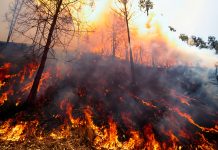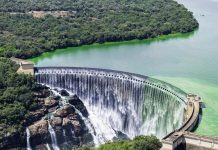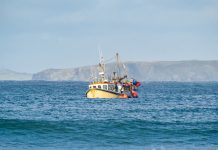Open Access Government delves into the key initiatives and strategies implemented by the governments of Alberta and Canada to safeguard their diverse fish populations
Alberta’s central repository for fish and wildlife, The Fisheries and Wildlife Management Information System (FWMIS), collects inventory data from government, educational institutions, museums, and representatives from the public and private sectors. This data supports provincial habitat conservation and wild species conservation endeavours. (1) FWMIS, maintained by the Government of Alberta, serves as a reliable resource for fisheries and wildlife inventory data. (2)
Alberta’s biodiversity initiatives include (3) programs focused on fisheries conservation, where biologists assess fish populations using several scientific methods. Consistent methods are utilized throughout the province and are explained in peer-reviewed literature. These methods provide crucial data that informs the management of fish and fisheries. They help regulate angler harvest and use while also protecting species at risk. Healthy fish populations allow us to enjoy the advantages of sustainable fisheries and thriving ecosystems. (4)
Angler surveys
To summarise, angler surveys collect essential information about fishing activities, including duration, number of fish caught, and whether they were “caught and harvested”. These surveys also gather demographic data and can give feedback on fisheries management topics, but they can be costly due to the time required.
Standardized data collection methods include interviewing anglers, counting them from boats or shores, and using trail cameras. This consistency ensures comparable survey results. After data collection, analysis using peer-reviewed methods helps fisheries biologists determine effective management practices for sustainable fish populations. For example, creel and angler effort surveys provide insights into the status of sport fisheries and the effectiveness of fishing regulations. (5)
River surveys
River surveys are typically conducted from June to August when lower water flows create safer conditions and improve visibility for fish capture. Fish are also more evenly distributed, which aids in detection and reduces variability among sites, and “avoids sampling during spring and fall spawning periods”. However, challenges like channel width, in-stream obstructions, water depth, turbidity, and velocity can impact sampling efficiency. Standardized techniques can help address these issues.
Data from river surveys and information on water quality, accessibility, development, and habitat threats inform Alberta’s Fish Sustainability Index (FSI). The FSI assigns sustainability risk scores to fish populations, ranging from very low to very high.
This index ensures consistency in fish stock assessments and provides a comprehensive evaluation of the sustainability and status of fish species in Alberta. Fisheries biologists use this information to assess the effectiveness of management actions or identify the need for alternative strategies.
River surveys also support recovery planning for at-risk species like Westslope Cutthroat Trout, Bull Trout, and Athabasca Rainbow Trout, as well as invasive species management, disease monitoring and mitigation, plus the Watercourse Crossing Program. (6)
Safeguarding fish and wildlife habitats
On May 21st, 2025, it was announced that the Springbank Off-Stream Reservoir (SR1) is now operational, providing flood protection in southern Alberta. SR1 not only mitigates overall flood risk but also safeguards the river, critical habitats, fish, and wildlife. During the regulatory process, mitigation and monitoring plans were developed for “fish, air quality, surface and groundwater, wildlife and vegetation”.
“The Springbank Reservoir reflects government’s commitment to protecting Albertans, wildlife and the diverse landscapes we all share. This flood mitigation measure will ensure critical habitats are protected, meaning fish and wildlife populations in the region can continue to thrive, while also protecting the outdoor spaces Albertans hold dear,” said Todd Loewen, Minister of Forestry and Parks. (7)
British Columbia’s marine waters
Beyond Alberta, British Columbia’s Pacific Coast rockfish fishery manages 37 species to ensure sustainability. Rockfish are particularly vulnerable to overfishing because they have slow growth rates, a low reproductive capacity, and experience high mortality rates when brought to the surface. Consequently, all rockfish species caught in the commercial groundfish trawl fishery must be retained, accurately documented, and reported to ensure that fishers do not exceed their allowed catch limits.
On July 9th, 2025, Roger Atchison, captain of the commercial vessel Savage Eagle, pleaded guilty in Prince Rupert court to multiple violations of Canada’s Fisheries Act. He released over 9,000 pounds of rockfish and failed to keep accurate fishing records between October 18th and October 23rd, 2023. Fisheries and Oceans Canada (DFO) enforces the Fisheries Act and seeks public assistance in reporting violations to protect marine resources. (8)
Conserving nature and protecting freshwater ecosystems
The Government of Canada is committed to conserving nature and biodiversity, plus protecting freshwater ecosystems by combating aquatic invasive species (AIS), such as Quagga Mussels and Zebra.
These species reproduce quickly, disrupt local habitats, damage water intake systems, and cause significant impacts on communities and industries. To address this, DFO and the Manitoba Government conducted a roadside inspection blitz on Highway 1 (the TransCanada Highway) from June 20th to 22nd, 2025.
“Canada’s natural heritage is part of our identity. Protecting our diverse and unique waterways from the negative impacts of aquatic invasive species is vital to preserving the health of our natural environment now, and for future generations. This joint inspection blitz with the Manitoba Government demonstrates the importance of collaboration and public awareness in preventing the spread of these harmful species in our waters,” said The Honourable Joanne Thompson, Minister of Fisheries. (9)
Looking ahead
The governments of Alberta and Canada are actively working to protect fish populations. We’ve explored flood protection measures in southern Alberta that safeguard these habitats, as well as initiatives in British Columbia aimed at conserving marine waters and freshwater ecosystems. We wish the governments success in their efforts to protect their diverse fish and wildlife populations.
References
- https://www.alberta.ca/fisheries-and-wildlife-management-information-system
- https://www.alberta.ca/fisheries-and-wildlife-management-informationsystem-overview
- https://www.alberta.ca/fisheries-and-wildlife-management
- https://www.alberta.ca/assessing-fish-populations
- https://www.alberta.ca/angler-surveys
- https://www.alberta.ca/river-surveys
- https://www.alberta.ca/release.cfm?xID=93349852C2036-0A95-AF01-
8404C4F6A985524E - https://www.canada.ca/en/fisheries-oceans/news/2025/07/british-columbiacommercial-rockfish-harvester-fined-25312-for-multiple-violations.html
- https://www.canada.ca/en/fisheries-oceans/news/2025/07/fisheries-andoceans-canada-partners-with-the-manitoba-government-to-conduct-anaquatic-invasive-species-roadside-inspection-blitz.html











